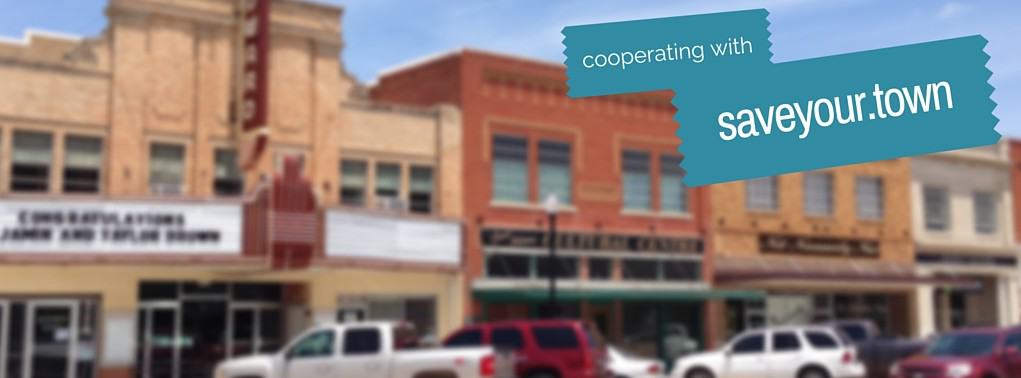
“Everything gigantic in American [retail] is about to get smaller or die.” James Kunstler wrote in 2013. He said big box retailers were on the brink of scale implosion, and that “every element of economic reality is now poised to squash them.”
Fast forward to 2017, and we’ve gone over the brink. Washington Post reported last month that the troubles in big boxes have been building for years and are now arriving full force. It seems like every week brings another story of big retail jobs lost, the shuttering of stores, and the financial losses at big retailers.
With all the doom and gloom around retail, you might think small retailers, especially small town retailers, don’t stand a chance. But that’s not true.
There are a lot of news stories that point to eCommerce as the cause of big retail’s decline and also as its replacement. Today, you can reorder all your regular items like paper towels or laundry soap just by tapping a button mounted right in the cabinet or by telling your voice-controlled assistant to handle it. Even more automated, you can set up all regular items on recurring shipments that you don’t even think about. Soon your refrigerator and cupboards will notice you’re low on something and just reorder it. That means no chance for a big box store to capture an impulse purchase when you make a quick run to the store for those items.
It’s worth noting that online sales today only amount to 8% of all retail sales, though it’s increasing. Online sales can’t be the only cause for big retail’s decline or the only replacement. We’re also purchasing less for a variety of societal and cultural reasons. But that still leaves a lot of purchases being made, but not at big boxes and not online.
Where are the rest of sales going? Small retailers.
While all boring retail purchases get automated, interesting retail purchases become small, sustainable, curated, handcrafted, local and integrated with technology. Items we care about, are interested in, and want to enjoy shopping for, will come from small local retailers.
Customers are already shifting their spending to smaller retailers. The MasterCard SpendingPulse for Small Business has reported on the “general consumer trend to shop small” for the past four years.
IBM Research says that in five years, buying local will once again beat online because of local retailers’ increasing use of technology. (This is IBM, remember.) Smart local stores will merge digital with physical retail. The physical store is close to customers, and gives immediate gratification. Merge that with the product information and reviews of online, plus the data to be more personalized, like wishlists and recommendations. Local stores will bring the web right to where the shopper can physically touch it.
What can local stores in small towns do today to capitalize on retail’s big split?
- Use big retail’s own tools against them. Try these 7 big-retail tricks including automatic orders, delivery, and better recommendations.
- Add more technology to be more human. Use tablets to improve your service. Teach customers how to buy from you through Alexa and Siri.
- Offer items that can’t be bought online. Locally-produced items, personalization and special services give you an advantage.
- Be your best small town self. Use your 7 Strengths as a small town retailer and shore up these 7 Common Weaknesses of Local Shops.
New to SmallBizSurvival.com? Take the Guided Tour. Like what you see? Get our updates.











Your fellow reader who asked to credited as A.T. sent this comment by email:
“Wow! Just what we needed. A realistic view of the best to come instead of the screaming of ‘no one shops locally anymore.’
I like to see things that are fun, unique and not mass produced. It is the experience that counts… much like the new generation of vacations that give you an experience, not a handful of postcards and a routine drive through redwood.
I can buy basic art supplies or household needs easily online… no wasted time, no travel….no searching through six stores that are all “out of” what I need. What I can’t get is the experience of an artist selling special supplies in the shop where they create AND display artworks. I can ask questions, take lessons, meet other artists and not feel like one of the long line of toilet paper buyers at the big box stores. I also can choose and vote with my feet as to which shop has truly made it a place to stop and shop…. not one trying to get me there on a guilt trip.
Thanks so much for this breath of fresh air. It will be the best of both worlds and it can’t happen too soon. Everyone should be scrambling to find their special place to offer their special ice cream, cookies, foot rub, art, or whatever.
We love the UPS, Fed Ex and USPS deliveries for us older, health limited, isolated shoppers. We are many. We are not the only slice of the population who feels this way, also.”